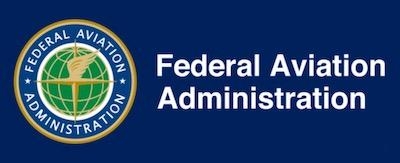Fri, Apr 03, 2020
Concerns Raised That Number Of Aircraft Will Exceed Capacity At Some Airports
The FAA has released a Safety Alert For Operators (SAFO) regarding the potential effects of parking overflow aircraft in excess of airport capacity.

Airlines have reduced capacity in the National Airspace System (NAS) due to the COVID19 pandemic-related flight restrictions. As domestic airlines work to find space to park up to 50% of their fleet, airport operators are working to find locations to support temporary overflow aircraft.
Therefore, air carriers, aircraft operators and all pilots should consider the following when considering operating into airports where overflow parking is present.
- A thorough Notice to Airmen (NOTAM) review for each flight should be completed to assess and determine the specific circumstances present at an airport. Airport conditions will differ and each should be known and fully understood prior to departure.
- Pilots should be particularly proactive during all operations due to potential unexpected circumstances resulting from non-standard operations.
- Pilots should be alert to instrument landing systems (ILS) presentations, fluctuations or inaccuracy due to disturbances in ILS beams.
- Pilots should report all unusual circumstances or events that differ from published expectations.
- Communication between flightcrew and air traffic control (ATC) entities should be positive and clear. If uncertainty exists then a go-around if airborne or stopping the aircraft on the ground should be considered.
- With normal ground operations flow disrupted flightcrew should consider the entire airport to be a “hot spot”.
- All pilots should exercise particular care during night or reduced visibility conditions.
Airport operators are encouraged to work collectively as a committee with airline representatives, fixed base operators, airport traffic control tower (ATCT) representatives, local FAA technical operations personnel, airport tenants, and Aircraft Rescue Firefighting (ARFF)/law enforcement representatives.
The airport operator, or aircraft parking plan committee under the direction of the airport operator, should include or consider the following items when developing an aircraft parking plan:
- Exhaust all space at gates, ramps and aprons first to the fullest extent possible. Attempt to leave unimpeded movement between operational and terminal areas.
-
Parking on runways should be avoided to the extent practicable due to the potential increased risk of runway incursions. However, please note that some airports have already begun parking on runways and therefore it is imperative that operators and flightcrew minimize the risk with the means recommended in this SAFO.
- (Runways that have already been permanently closed or abandoned can be made available for overflow parking, as long as the aircraft parking meets the standards.)
- Maximize the use of intermediate taxiway(s) for potential parking.
- Review all potential airport design or facility impact to include but not limited to: ATCT line of sight, communications equipment, impact to Navigation Aids (NAVAIDs), ILS Critical Areas, and Visual Aids.
- Consistent with the requirements of Title 14 of the Code of Federal Regulations (14 CFR) part 139, if nonstandard parking locations are utilized, normal notification procedures for closing taxiways long-term must be followed, including, but not limited to: NOTAMs, Automatic Terminal Information Service (ATIS) updates, barriers, night markings, de-energize lighting, operations notification, etc.
- Extensive coordination should occur with ARFF, law enforcement and other emergency response officials, as well as tower personnel on any changes to emergency operation routes.
Directors of Operations, Chief Pilots, and aircraft operators should notify their flightcrew of the existence of various degrees of overflow parking. Air carriers with Safety Management Systems (SMS) should perform risk assessments for each airport experiencing overflow parking to determine specific risk mitigations. For assistance or questions at specific airports, contact the airport authority.
(Source: FAA)
More News
Aero Linx: International Flying Farmers IFF is a not-for-profit organization started in 1944 by farmers who were also private pilots. We have members all across the United States a>[...]
From 2017 (YouTube Version): Remembrances Of An Israeli Air Force Test Pilot Early in 2016, ANN contributor Maxine Scheer traveled to Israel, where she had the opportunity to sit d>[...]
"We renegotiated what our debt restructuring is on a lot of our debts, mostly with the family. Those debts are going to be converted into equity..." Source: Excerpts from a short v>[...]
Also: B-29 Superfortress Reunion, FAA Wants Controllers, Spirit Airlines Pulls Back, Gogo Galileo Van's Aircraft posted a short video recapping the goings-on around their reorganiz>[...]
Chart Supplement US A flight information publication designed for use with appropriate IFR or VFR charts which contains data on all airports, seaplane bases, and heliports open to >[...]
 ANN's Daily Aero-Linx (04.15.24)
ANN's Daily Aero-Linx (04.15.24) Classic Aero-TV: 'No Other Options' -- The Israeli Air Force's Danny Shapira
Classic Aero-TV: 'No Other Options' -- The Israeli Air Force's Danny Shapira Aero-News: Quote of the Day (04.15.24)
Aero-News: Quote of the Day (04.15.24) Airborne 04.16.24: RV Update, Affordable Flying Expo, Diamond Lil
Airborne 04.16.24: RV Update, Affordable Flying Expo, Diamond Lil ANN's Daily Aero-Term (04.16.24): Chart Supplement US
ANN's Daily Aero-Term (04.16.24): Chart Supplement US



